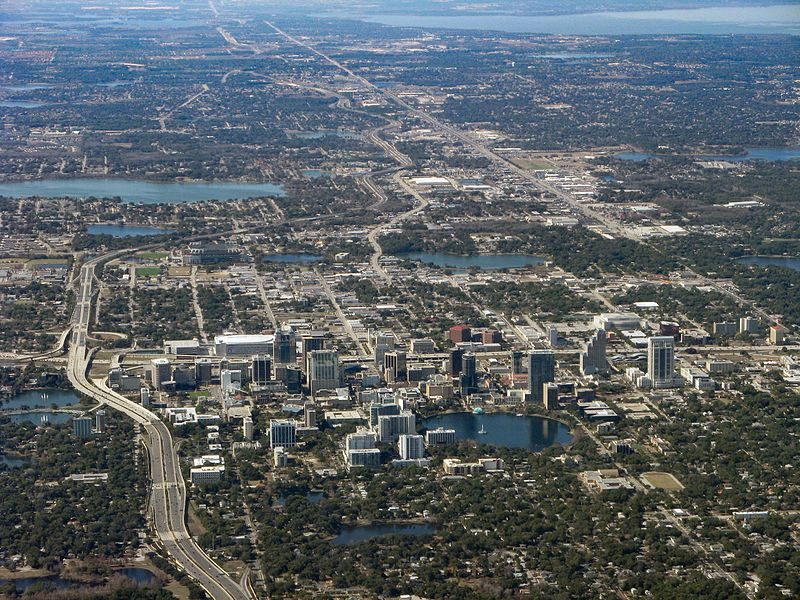
News and Commentary. The city of Orlando has just passed a new drone ordinance – and it is one of the most restrictive on the books. But does Orlando’s new ordinance really contribute to safety, or just create more confusion for commercial and recreational drone operators alike?
Orlando’s Ordinance no. 2016-87 clearly makes an effort to sound encouraging to drone operators. Introduced by a series of 7 “whereas” explanations, the ordinance says that “new innovations in unmanned aircraft, also known as drones, have expanded a vibrant community of hobbyists and impacted commercial applications in a profound way that can positively stimulate growth and increase economic efficiency for a diverse and expanding array of businesses…” and that “the City Council of the City of Orlando, Florida wishes to promote hobbyist and commercial use of unmanned aircraft while balancing the paramount need to protect the well-being, tranquility, and privacy of its citizens.” And then the hammer drops: five and a half more pages of terms, definitions, conditions, and restrictions against drone operation follow.
The law provides the common restrictions on harassment or voyeurism by drone, weaponization, and leaving the scene of a drone accident. But city lawmakers went much further, creating a structure whereby the only practical way to use a drone recreationally or commercially in the city will be to apply for permits (with a fee attached) from the city. Permits require indemnification of the city and proof of insurance – and who knows how easily they will be obtained, or under what circumstances.
The new ordinance avoids any argument on federal preemption in the airspace: it doesn’t ban drone flight over the city of Orlando. Instead, it takes a practical approach to reach the same conclusion: it is prohibited to launch or land a drone without a permit in Orlando within 500 feet (that’s about 2 city blocks, depending upon where you are) of a venue; outdoor assembly; event of greater than 1000 people, jail; park; school; or any building owned by the city. Violators of the new ordinance risk action by local law enforcement, including the possibility of arrest and the near certainty of having their drone confiscated (drones in violation are clearly defined as “contraband” in the ordinance.)
The Orlando ordinance may be subject to a challenge. The City of Newton, MA, is being sued by a resident and drone operator in protest of the city’s ordinance requiring a separate registration and city fee for all drones, among other restrictions. The FAA may gather its forces to control the spreading “patchwork quilt” of regulations Michael Huerta has warned against. But the legal process is slow; few precedents exist; and the cases that are challenging the whole concept of who can regulate the skies are still in their infancy. The Orlando ordinance is effective immediately.
In theory, recreational operators who don’t live 500 feet away from any of the conditions listed above will have to look for designated drone areas that may be provided in city parks. Commercial operators will have to examine each job location for potential conflicts and apply for city permits, paying fees and navigating an administrative process that may come on top of the complex FAA system of waivers and authorizations already in place. In practice, the ordinance may add a level of complexity sufficient to send many operators – both commercial and recreational – into the gray area of flying with FAA approval but without being sure that they are meeting local requirements.
Or, drone operators may just stop flying entirely.
Mike Winn, DroneDeploy’s co-founder and CEO, offers this commentary on the new law: “City-by-city drone regulations such as the one recently passed in Orlando set a bad precedent because they generate confusion among remote pilots, law enforcement and the public about what drone activities are and aren’t allowed and make it harder for operators using drones for legitimate commercial purposes to keep track of regulations and maintain compliance. By comparison, nationwide regulations from the FAA help provide regulatory clarity and allow for efficient activity by drone pilots, airmen, and law enforcement alike.”
DroneDeploy, DJI, and other technology companies have long claimed that collaboration between the industry and federal agencies leads to flexible regulations sufficient to ensure safety without limiting business. Additionally, the industry says that technology solutions to safety should be utilized as an effective and evolving alternative to a slow and inflexible regulatory system.
“The FAA and private industry have made significant strides in the last year to assure public safety with respect to drones, including the approval of the FAA’s Part 107 rule, the inclusion of sense and avoid technology in many of the latest drone models, and the adoption tools to help drone pilots easily understand where they are and are not allowed to fly,” says Winn. “For example, pilots using DroneDeploy’s mobile app for planning flights can view notifications from airspace intelligence company Airmap to make sure that they do not encroach upon any airspace restrictions.”
Miriam McNabb is the Editor-in-Chief of DRONELIFE and CEO of JobForDrones, a professional drone services marketplace, and a fascinated observer of the emerging drone industry and the regulatory environment for drones. Miriam has penned over 3,000 articles focused on the commercial drone space and is an international speaker and recognized figure in the industry. Miriam has a degree from the University of Chicago and over 20 years of experience in high tech sales and marketing for new technologies.
For drone industry consulting or writing, Email Miriam.
TWITTER:@spaldingbarker
Subscribe to DroneLife here.